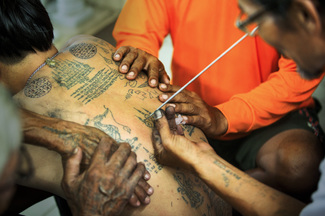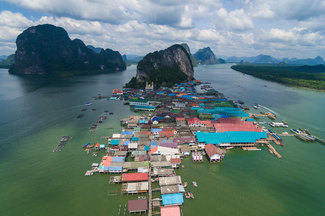JIM THOMPSON’S HOUSE – A BANGKOK MUST-SEE
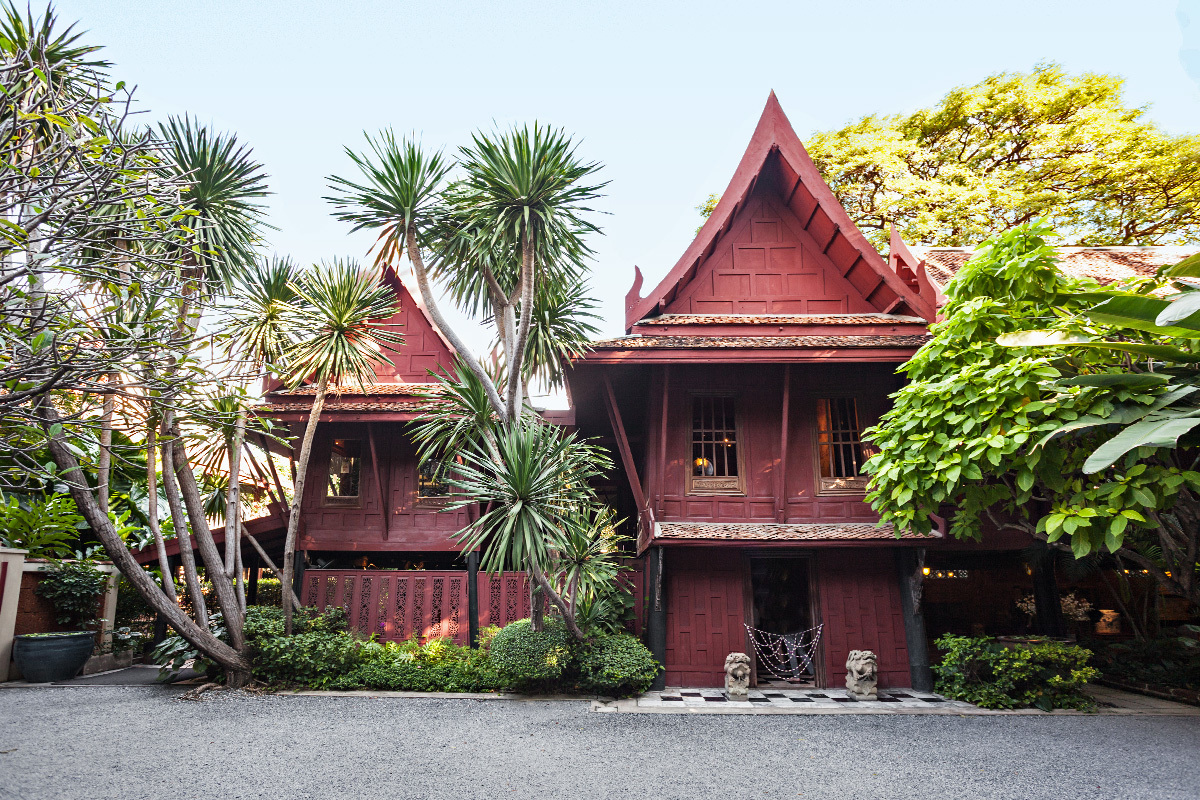
Jim Thompson will be forever remembered as the man who revived Thailand’s moribund silk industry, putting it on the map internationally and establishing one of Thailand’s most recognizable and distinctive brands. But, the mystery surrounding his disappearance in 1967 while on a trip to Malaysia is for many still the most intriguing aspect of his life, which after countless books and articles speculating on the possible causes is nowhere near to being solved.
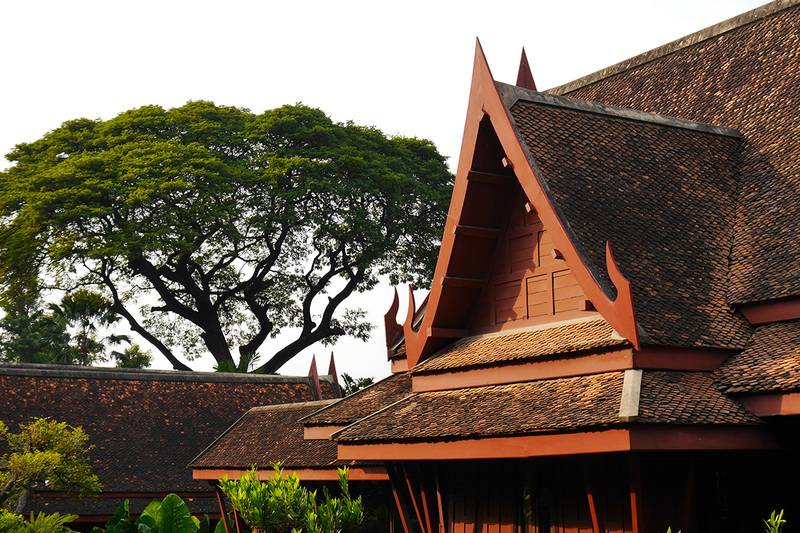
Beautiful Thai teak houses, lovingly restored
Jim Thompson, son of a prosperous textile manufacturer in Delaware, had a privileged upbringing, attending the prestigious St Paul’s School before graduating from Princeton University in 1928 and in that same year represented the United States in the six-metre sailing event at the 1928 Summer Olympics. His team managed sixth place.
Thompson then undertook post-graduate studies at the University of Pennsylvania’s School of Architecture, but due to his weakness in calculus failed to graduate. He nevertheless found work with an architectural firm in New York and spent some nine years designing houses for the wealthy denizens of the eastern seaboard. Thompson found the work uninspiring and spent a great deal of his time socialising among the smart set of Delaware and New York.
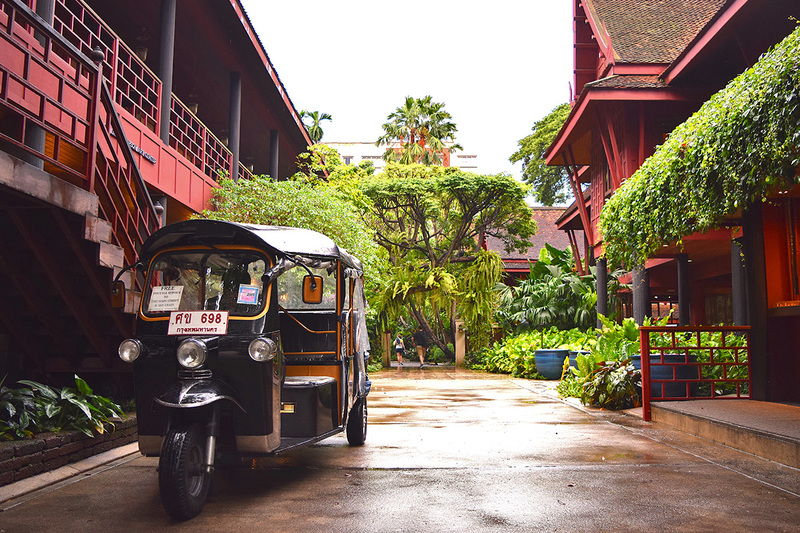
A tuk-tuk waiting for guests outsidethe Jim Thompson House
By the late 1930s Thompson had grown weary of the high life and began to withdraw, declining invitations to parties and social events and took a much more serious interest in what was happening in a Europe soon to be at war. This change of demeanour from social gadabout to vitriolic gadfly caused a good deal of friction between Thompson and his family which never really dissipated even after decades apart.
In 1941 he quit his job and joined the Delaware National Guard which proved to be somewhat less inspiring by some huge degree than Thompson had imagined. Here he encountered men from all walks of life, most of whom were very far removed from the life he had known – drifters, working class men bereft of job opportunities and the sons of once-prosperous Delaware families who had lost their fortunes in the great Wall Street Crash of 1929 and the subsequent Great Depression of the 1930s.
In 1943, at the age of 37, he married a 23-year-old former model, reputed to be one of the most beautiful women in Virginia and a daughter of one the state’s foremost families. It was a match his family heartily approved of. The marriage, however, was not a success and in late 1943 a close friend, Ed Black, sensing Thompson’s frustration at his prospects as he approached forty, suggested he join the OSS (Office of Strategic Services) America’s wartime intelligence service and the forerunner of today’s CIA. Finally, in December 1943, Thompson was discharged from the tedium of Delaware National Guard and had become a spy and was in the war in earnest.
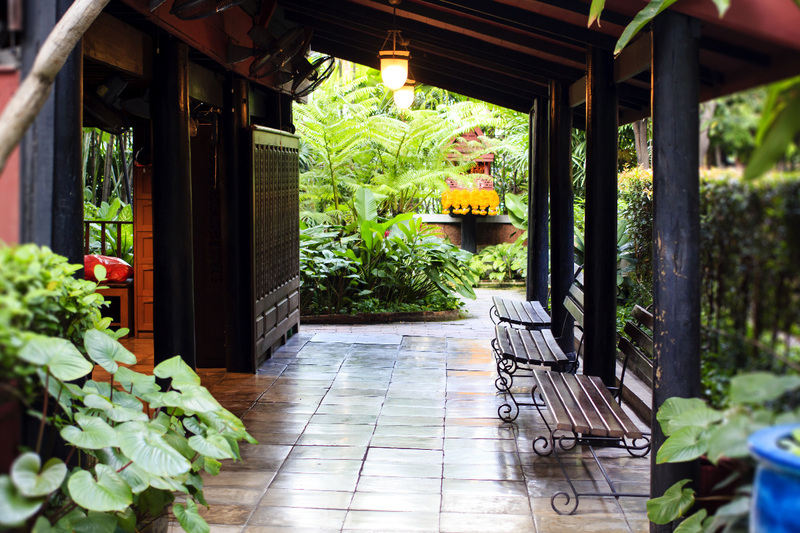
The patio in the Jim Thomson Museum
Thompson was in his element, surrounded by like-minded men of liberal temperament and views, intelligent and cultured like himself but with an adventurous streak that was infectious. With an almost unlimited budget the OSS threw lavish parties in European capitals all the while recruiting agents and planning operations to work against the Axis powers.
When the OSS finally sent men to Thailand they were lodged at the Suan Kularb Palace in Bangkok, right under the noses of the occupying Japanese forces, where they were treated like royalty. The men from the OSS were idealistic and anti-colonial, believing it their mission to help Asians liberate themselves, first from the rapacious Japanese and then their colonial masters, and Thompson was no exception.
Unfortunately the post war world of communist bogeymen meant that idealism had no place in the realpolitik of the Cold War, something Jim Thompson had a hard time accepting and which would bring him into conflict with his superiors in American Intelligence, where his railing against American strategies in Vietnam made him suspect in their eyes.
The podgy Thompson, much to the surprise of his training officers and fellow recruits, excelled at OSS training and was soon promoted Major, stationed first in North Africa and then the Mediterranean theatre, drawing the attention of the OSS’s chief Bill Donovan for his work in intelligence. At war’s end Thompson had won five bronze stars and numerous other medals for exemplary service.
As Thompson’s OSS career developed his relationship with his wife, never particularly warm, became increasingly distant and eventually Thompson would receive a letter from his wife telling him their marriage was over and that she had met someone else. A tearful Thompson vowed to a friend that he would never return to the United States again.
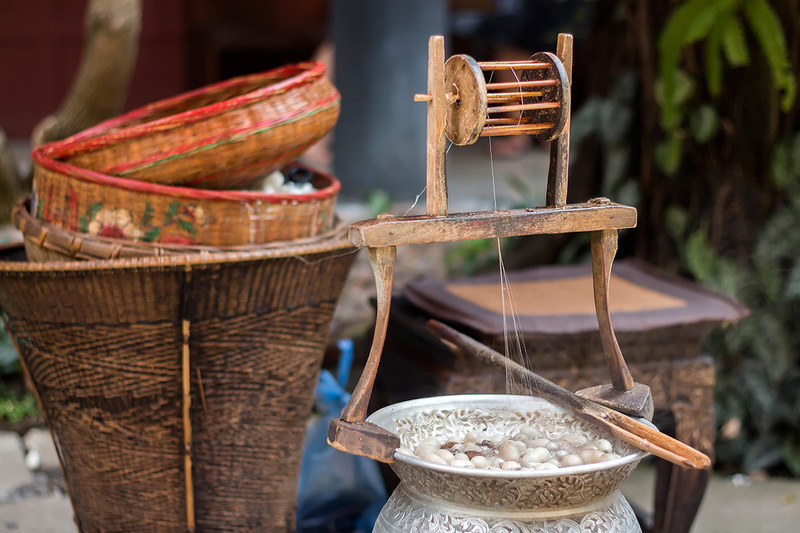
In the making…
Thompson was air-dropped into Thailand just after the Japanese surrender and took up official duties at the American Legation located in the Suan Kularb Palace where each day hordes of people queued to see him with a myriad problems to be solved. In 1946 Thompson headed for home to seek his discharge from the OSS and finalise his divorce before returning to Thailand where he joined with a group of investors to buy the Oriental Hotel in Bangkok.
Various differences with his partners resulted in his selling his shares in the venture and setting his sights on silk instead. In 1948 he found a partner, George Barrie, and established the Thai Silk Company Limited. Their big break came when Irene Sharaff, Oscar-winning costume designer, chose Thai silk for the Rogers and Hammerstein hit musical The King and I, from which point the company prospered like never before.
Jim Thompson’s fame spread around the world, and soon his house along the Saen Saeb Canal became the place for visiting foreign dignitaries and celebrities to visit. In 1958, after years of collecting art objects from all across the region and China, Thompson decided to build a house for himself and his objets d’art.
The house in Ban Khrua, opposite the ancient silk weavers’ quarter of the city, a combination of six teak houses, dismantled and brought to Bangkok from Ayutthaya and Ban Khrua, and arranged in Thompson’s unconventional layout and set in splendid floral gardens has become one of Bangkok’s must-see attractions. The house itself is a marvel and the antiquities stored within treasured artefacts lovingly collected over Thompson’s lifetime.
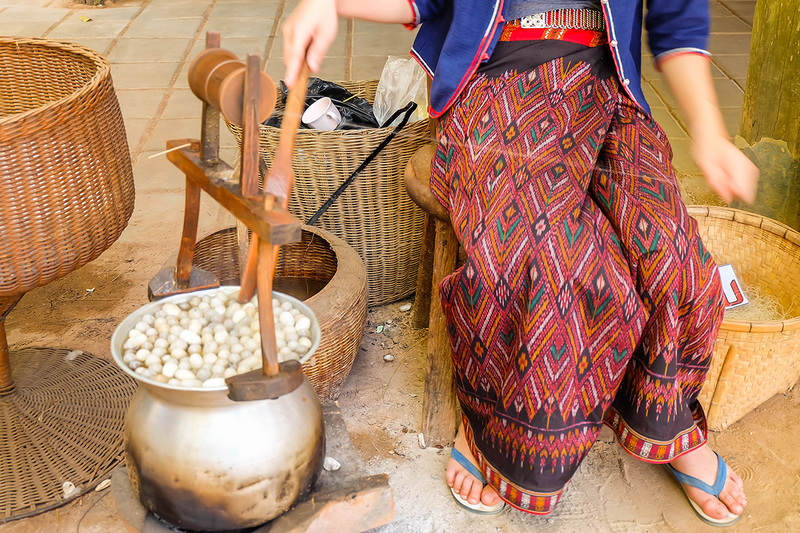
Weaver at traditional loom, Ban Khrua
In 1967, while on holiday in the Cameron Highlands in Malaysia, Jim Thompson went out for a walk one Easter Sunday afternoon and was never seen again. A massive search was conducted involving the army, police, tourists, Orang Asli (aboriginal jungle dwellers), scouts, schoolchildren, mystics, British soldiers and American students all to no avail. No trace of Thompson was ever found nor anything belonging to him.
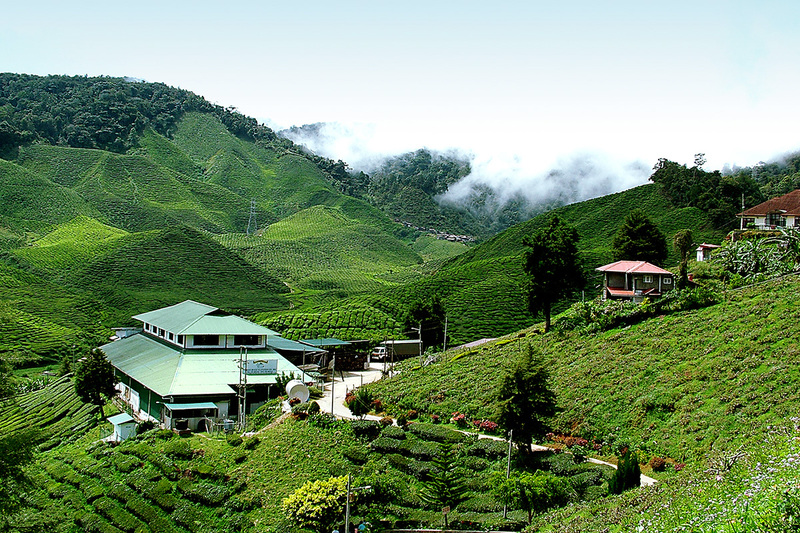
Cameron Highlands, Malaysia
His disappearance created a media frenzy with speculation running from kidnapping to murder. One recent documentary, Who Killed Jim Thompson, suggests that Thompson had not ever completely retired from the espionage game and had met with a group of rebels from the Communist Party of Malaya seeking an interview with the party’s secretary general, and when their suspicions were aroused he was disposed of.

Now a world-renowned brand
At the time of his death Thompson’s business was making $1.5 million a year, not bad for a man who was once considered invisible by his New York and Delaware socialite friends. The museum today is a glorious reminder of Thompson’s achievement, never easy in a country as Machiavellian in its business dealings as Thailand was and is, and proof perhaps that all we need in life is the right place, the right time, and a great idea to achieve success.










of collaborative energy




Before proceeding to use the website please carefully ready our Terms and Policies
I accept Diwerent's Terms and Conditions and Privacy Policy










